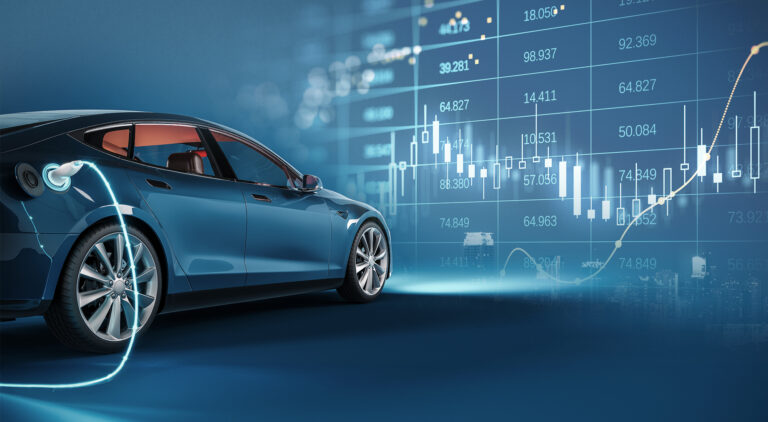TL;DR:
- Electric cars are rapidly gaining popularity due to their environmental benefits and advancements in technology.
- The article explores the latest innovations, including improved battery life, charging infrastructure, and smart connectivity features.
- A comparison of electric cars with traditional gasoline vehicles highlights their cost savings and long-term sustainability.
- Key challenges such as range anxiety and initial purchase cost are addressed, along with potential solutions to encourage wider adoption.
- The future of electric cars looks promising, driven by regulatory support and growing consumer demand for greener alternatives.
Discover how electric cars are revolutionizing the automotive industry!
Introduction
Electric cars are transforming the automotive landscape at an unprecedented pace. As we approach 2025, a wave of innovations promises to reshape how we think about mobility. From groundbreaking battery technologies to smarter infrastructure, these changes are not just coming—they are here. Consumers are eager for sustainable options, and manufacturers are racing to meet that demand. In this article, we’ll explore ten trends that will define the electric car revolution over the next few years. Buckle up as we dive into the future of driving, where eco-friendly choices and technological advances go hand in hand. Stay informed, stay ahead!
What Are the Latest Advancements in Battery Technology for Electric Cars?
The electric car market is rapidly evolving, and one of the most exciting aspects of this evolution is the advancement in battery technology. These innovations not only enhance performance but also drive the adoption of electric vehicles (EVs). With growing concerns over climate change and energy sustainability, understanding these developments is essential for anyone interested in the future of transportation.
How Do Solid-State Batteries Improve Performance?
Solid-state batteries represent a significant leap forward in battery technology. By replacing the conventional liquid electrolyte with a solid electrolyte, these batteries offer several advantages:
- Higher Energy Density: Solid-state batteries can store more energy in the same space, potentially extending the range of electric cars.
- Enhanced Safety: They are less flammable and have a lower risk of leaks.
- Faster Charging: Due to their design, these batteries can be charged more quickly, a crucial factor for many consumers.
The promise of solid-state batteries positions them as a game-changer for electric cars, addressing common concerns about range and charging times.
What Role Do Fast-Charging Solutions Play in Adoption?
Fast-charging solutions are critical in expediting the adoption of electric cars. If EV owners can charge their vehicles quickly, it lessens range anxiety and enhances convenience. Key aspects include:
- Time Efficiency: Many fast chargers can recharge a vehicle’s battery to 80% in under 30 minutes.
- Wider Infrastructure: The development of fast-charging stations supports long-distance travel, making electric cars more viable options for everyday use.
As these solutions become more widely accessible, they help to build consumer confidence in electric vehicles.
How Is Recycling Driving Sustainability in Battery Production?
Sustainability is at the heart of the electric car movement, and battery recycling plays a vital role. By reusing materials from old batteries, manufacturers can reduce the environmental impact associated with mining new resources. Consider these benefits:
- Resource Conservation: Recycling ensures that valuable materials like lithium and cobalt are reclaimed and reused.
- Lower Carbon Footprint: A focus on recycling can help decrease the overall carbon emissions associated with battery production.
Through innovative recycling practices, the industry is moving towards a more sustainable future for electric cars, making them a smarter choice for eco-conscious consumers.
In conclusion, as we explore the latest advancements in battery technology for electric cars, it becomes clear that innovations
How Will Autonomous Driving Change the Electric Vehicle Landscape?
As the future of transportation evolves, the intersection of autonomous driving and electric vehicles (EVs) sparks significant interest. With global trends leaning towards sustainability and innovation, understanding how these technologies converge is essential for stakeholders in the automotive industry and everyday consumers alike.
What Are the Key Technologies Behind Self-Driving Electric Cars?
Self-driving electric cars leverage several advanced technologies, making them safer and more efficient. Key components include:
- Lidar and Radar Systems: These sensors are integral for mapping surroundings and detecting obstacles.
- Artificial Intelligence: Algorithms process vast amounts of data for decision-making in real-time.
- Connectivity Features: Vehicle-to-Everything (V2X) communication enhances navigation and traffic management.
These technologies not only redefine driving experiences but also align with the push for cleaner transportation.
How Do Regulations Impact the Development of Autonomous EVs?
Regulations play a pivotal role in shaping the development of autonomous electric vehicles. Governments worldwide are establishing standards to ensure safety and reliability. Key points include:
- Testing and Compliance: Manufacturers must adhere to stringent testing protocols before public deployment.
- Incentives for Adoption: Many governments offer tax breaks or subsidies for consumers purchasing autonomous EVs.
- Data Privacy Laws: As data sharing increases, regulations will need to address user privacy and security.
These regulations aim to enhance public trust while facilitating innovation in the electric car industry.
What Are the Safety Considerations for Autonomous Electric Vehicles?
Ensuring safety in autonomous electric vehicles is paramount. Some critical considerations include:
- Fail-Safe Mechanisms: Systems must have backups if a component fails, preventing catastrophic outcomes.
- Cybersecurity Measures: Robust defenses against hacking and data breaches are essential to protect user information.
- Accident Liability: Clarifying who is responsible in the event of an accident is vital for consumer confidence.
Addressing these concerns will not only enhance the safety of electric cars but will also foster greater public acceptance.
For more information, you can check out resources from “National Geographic,” “IEEE Spectrum,” “NHTSA,” “Vox,” “The Verge,” and “MIT Technology Review.”
What Infrastructure Improvements Are Needed for Electric Cars?
As electric cars continue to gain popularity, a robust infrastructure is crucial to support their growth. According to recent statistics, the number of electric vehicles (EVs) in the U.S. is projected to exceed 18 million by 2030, which emphasizes the urgent need for enhancements in charging and power distribution systems.
One of the main challenges includes the limited availability of charging stations. Addressing this problem requires strategic investments to expand charging networks, particularly in urban areas and along major highways. The integration of public and private partnerships could drive investments and foster innovation in charging technologies.
How Is the Growth of Charging Stations Impacting EV Adoption?
The expansion of charging stations significantly influences public acceptance of electric cars. Easy access to charging options reduces range anxiety, a common concern among potential EV buyers. Real-world examples show:
- Cities like Los Angeles have increased chargers from about 2,000 to over 10,000 in just a few years.
- Nationwide initiatives aim to install 500,000 chargers by 2030.
Such improvements position electric cars as a viable alternative to traditional vehicles and enhance overall adoption rates.
What Role Do Smart Grids Play in Supporting Electric Vehicles?
Smart grids represent a transformative approach to managing electricity consumption and distribution, particularly vital for supporting the rising demand from electric cars. They enable:
- Real-time monitoring and adjusting power flow.
- Integration of renewable energy sources, reducing carbon emissions.
By utilizing data analytics and automated systems, smart grids can optimize charging schedules, ensuring a stable electric supply while minimizing costs.
How Can Urban Planning Adapt to Increased EV Usage?
Urban planning must evolve by incorporating infrastructure for electric vehicles. Cities can adapt by:
- Designating EV zones with abundant charging facilities.
- Implementing incentives for businesses to install chargers.
Moreover, as electric vehicles gain traction, urban layouts can integrate charging stations into parking facilities and public transport hubs, facilitating convenient access for users and promoting a sustainable future.
What Consumer Trends Are Driving the Electric Car Market?
Are you considering a switch to electric cars? It’s no surprise that the electric vehicle (EV) market is surging as consumers become increasingly aware of their buying behaviors and the impacts of their choices. As more people prioritize sustainability, the electric car market is feeling the pressure to evolve and adapt.
How Are Environmental Concerns Influencing Buying Decisions?
Environmental awareness is a critical driver behind the shift toward electric vehicles. With growing concerns about climate change and pollution, consumers are increasingly recognizing their role in protecting the planet. Key factors include:
- Reduced emissions: Electric cars produce zero tailpipe emissions, appealing to eco-conscious buyers.
- Sustainability initiatives: Many car manufacturers are investing in green technologies and ethical sourcing to align with consumer values.
This shift in perspective makes electric cars an attractive option for those looking to make environmentally responsible choices.
What Demographics Are Most Likely to Shift to Electric Vehicles?
Understanding demographics is vital in predicting consumer behavior in the electric car market. Key groups include:
- Younger generations: Millennials and Gen Z are typically more environmentally and socially conscious, driving demand for electric vehicles.
- Urban dwellers: Residents of cities are looking for sustainable, cost-effective transportation solutions, often finding electric cars appealing.
Targeting these demographics can significantly enhance market strategies for electric vehicle manufacturers.
How Do Incentives and Tax Breaks Affect Consumer Choices?
Incentives play a crucial role in making electric cars more appealing to consumers. Consider the following impacts:
- Tax credits: Many governments offer tax incentives for EV buyers, reducing the overall cost and making the transition easier.
- Financial rebates: Local programs may provide additional rebates, further incentivizing purchases.
These financial benefits crucially influence consumer decisions, making electric cars a more accessible option.
For more insights into the electric vehicle landscape, explore resources from the International Energy Agency, U.S. Department of Energy, BloombergNEF, Forbes, Electrek, and Green Car Reports.
What Innovations in Design and Features Are Emerging in Electric Cars?
Have you ever wondered how electric cars are leading the charge in automotive innovation? As consumers demand more from their vehicles, manufacturers are harnessing cutting-edge technology and thoughtful design to enhance the overall driving experience. This evolution addresses the challenges people face when transitioning from traditional gas-powered vehicles to electric cars, positioning these innovative models not just as alternatives, but as preferred choices.
How Are Manufacturers Enhancing User Experience Through Technology?
Electric cars are at the forefront of integrating advanced technology to improve user experience. From intuitive touchscreen interfaces to driver-assistance systems, manufacturers focus on making driving more enjoyable and efficient. Features such as over-the-air updates, predictive maintenance alerts, and integrated smart home capabilities are becoming standard. In fact, brands like Tesla and Ford are continually enhancing their software, providing seamless connections between the vehicle and the driver’s digital life. For more insights on how technology impacts electric cars, check out resources from “Electric Cars Report” and “Autotrader”.
What Trends Are Shaping the Aesthetic Appeal of Electric Vehicles?
The design of electric cars is increasingly influenced by sustainability and modern aesthetics. Manufacturers are using lightweight materials and aerodynamic shapes not only to improve efficiency but also to create a visually appealing vehicle. The growing popularity of unique color palettes and customizable features has made electric cars stand out on the road. Brands like Lucid Motors and Rivian are pushing boundaries in design, proving that eco-friendly vehicles can also be eye-catching. Learn more about these trends from sources like “Car and Driver” and “MotorTrend”.
How Do Safety and Performance Features Compare to Traditional Cars?
When it comes to safety and performance, electric cars are matching or even exceeding traditional vehicles. Advanced safety features such as automatic braking, lane-keeping assist, and 360-degree cameras are standard in many models. Moreover, electric motors provide instant torque, enhancing acceleration and overall performance. As consumers evaluate their options, understanding these advancements is crucial. For a detailed comparison, refer to “Consumer Reports” and “Safety Reports”.
With electric cars continuously evolving, the journey to find the perfect vehicle is more exciting than ever. Explore articles from “Edmunds” and “Car and Driver” to stay updated on the latest developments in this dynamic automotive landscape.
Conclusion:
In conclusion, electric cars represent a transformative shift in the automotive industry, offering significant advantages such as reduced emissions, lower operating costs, and innovative technology. Throughout the article, we’ve explored how this eco-friendly option is not only beneficial for individual drivers but also pivotal for combating climate change. As the world increasingly embraces sustainable alternatives, the future of electric cars seems brighter than ever. We invite you to explore more of our content to stay informed about the evolution of electric vehicles and their impact on our environment. Discover what lies ahead in this exciting journey towards a greener future!



